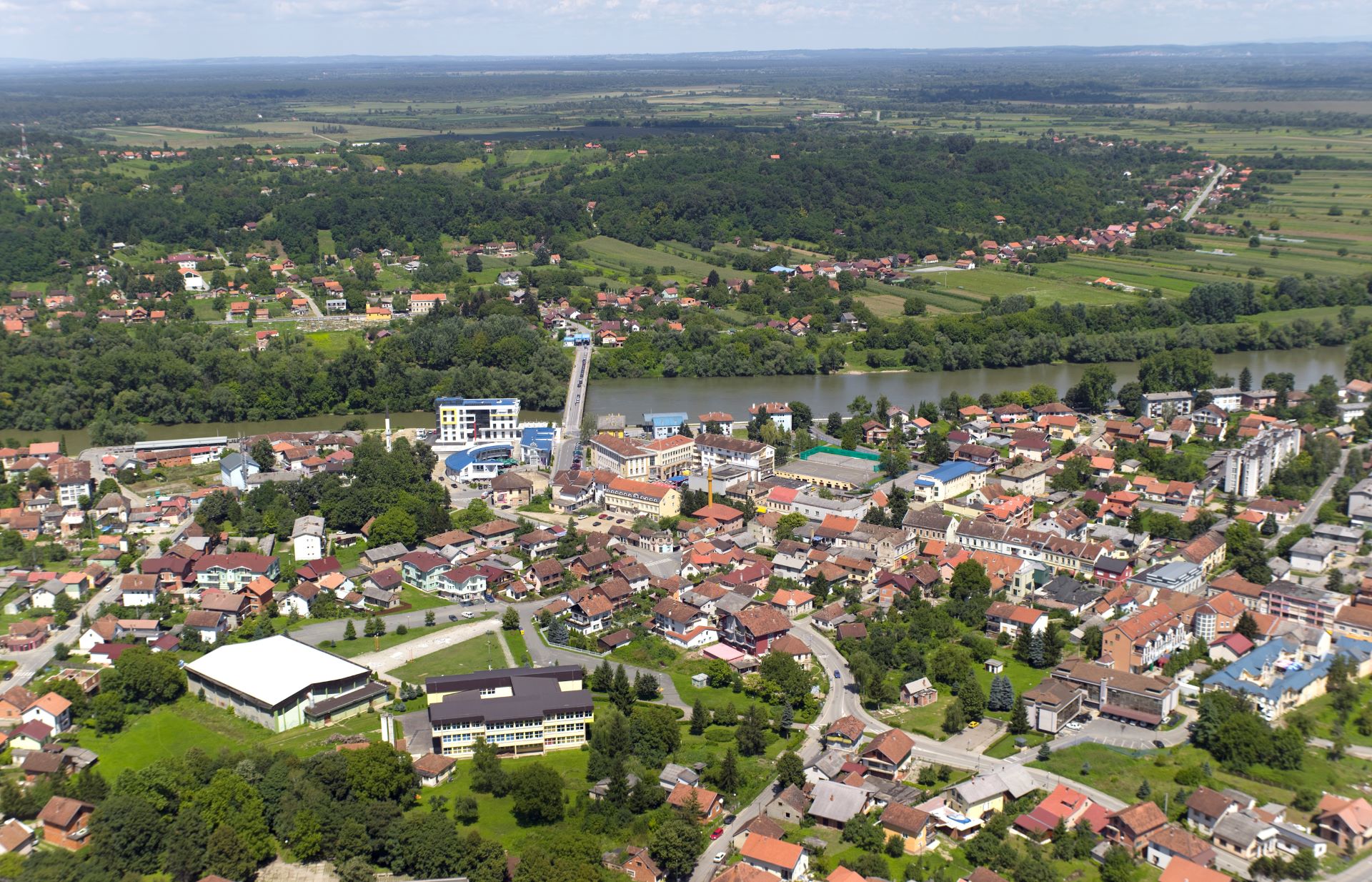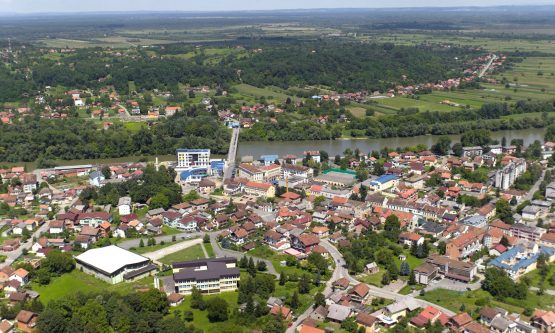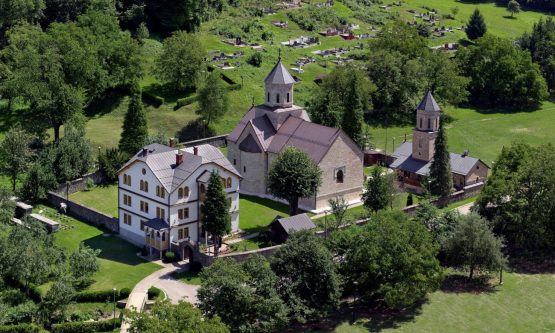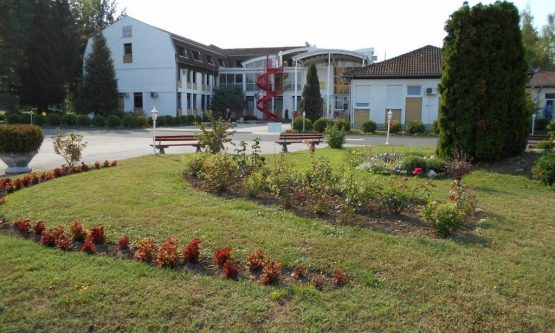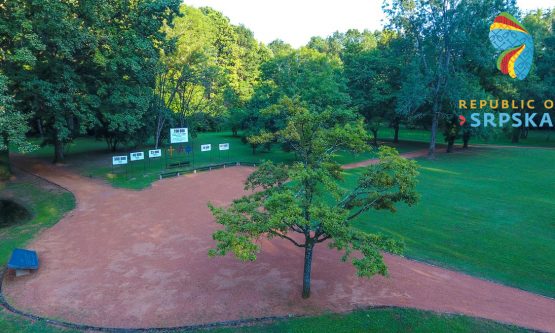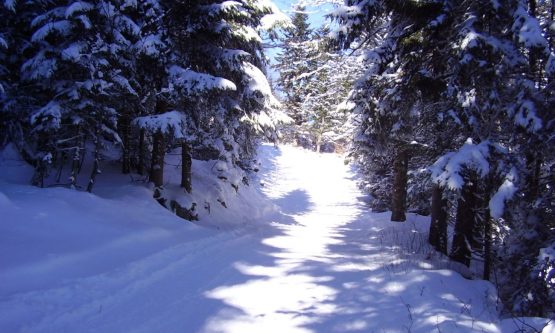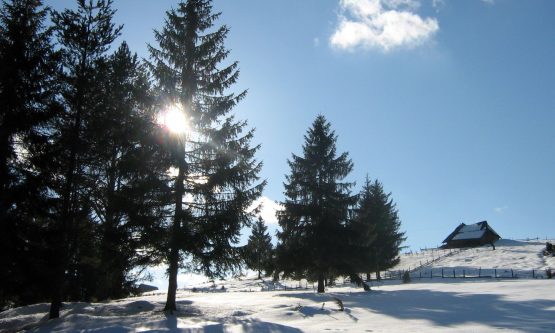Welcome to Kozarska Dubica
Nestled on the banks of the picturesque Una River and at the foothills of the legendary Kozara mountain, Kozarska Dubica is a charming town in northwestern Republika Srpska. It enchants visitors with its intriguing 20th-century buildings and modern 21st-century architecture.
The town’s name, Dubica, originates from the Slavic words “dub” (oak) and “dubnica” (a boat carved from an oak log). This name, signifying a place of oaks and boats, perfectly captures the town’s natural surroundings.
Today’s Kozarska Dubica, especially its center, was built by tradesmen and artisans. Its development began in 1852 with the first houses being built in Ježevica. In 1901, with the establishment of the “Una” sawmill, the Serbian town began to rapidly grow. Within 40 years, the town’s business center, main street (formerly King Alexander Street, now Svetosavska Street), and its most beautiful building were constructed. Remarkably, this street has largely retained its authenticity to this day.
Culture
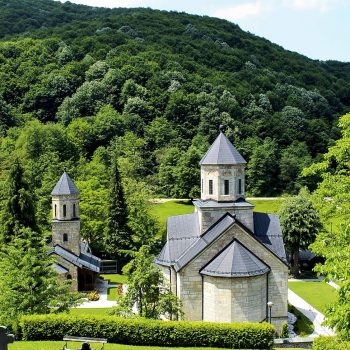
Visitors should not miss the Church of the Holy Apostles Peter and Paul, the memorial temple of Saint Petka, or the Moštanica Monastery, nestled at the foot of Kozara, 12 km from the city center. With its centuries-old existence, the monastery represents a foundation of religious, cultural, and spiritual values.
To learn more about the authenticity of life in the past, visit the Knežića Ethno-Household, where memories of bygone days are preserved and presented through a rural household near the church.
The National Library in Kozarska Dubica was founded in 1964 and has a book collection of over 41,000 units. Since 1988, the library has housed the legacy of Bosko Šiljegović, a national hero, which includes, among other things, a lithograph by the famous painter Pablo Picasso, “Self-Portrait – Man’s Head.” The graphic is part of the permanent exhibition displayed in the National Library.
The Public Institution “Memorial Area of Donja Gradina” is a memorial to the victims of the Nazi crime committed between 1941 and 1945 against “undesirable” ethnic, racial, and religious groups such as Serbs, Jews, and Roma, as well as anti-fascists, regardless of their faith or nation, who opposed the Nazi regime of the then Independent State of Croatia (NDH).
It will remain an eternal monument to the extent to which human crime against humanity can reach, a universal and understandable message to all peoples of the world that such a crime must never be repeated.”
Nature
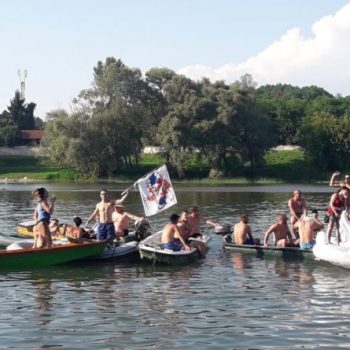
Where the sun kisses the fertile land of Potkozarje and the azure-green Una River peacefully flows through the heart of lush fields, nestled is Kozarska Dubica. Nature has favored this part of our Republic of Srpska, as all four sides of this town abound in untouched nature and beautiful greenery that offers peace and tranquility. In one such peaceful and naturally preserved place, you can find the Mlječanica spa and the Moštanica monastery.
The emerald-green Una River is an eternal inspiration, its banks are a gathering place for all those who love nature. Kozarska Dubica boasts several public and private beaches on the Una, such as the Blago and Kej beaches, as well as the newly equipped Bager beach.
The Una Regatta is an international event that lasts for three days and passes through the municipalities of Novi Grad, Dvor, Kostajnica, Hrvatska Kostajnica, Kozarska Dubica, and Hrvatska Dubica.
Adventure
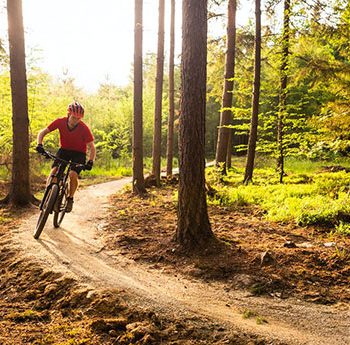
Kozara Cycling Route and Off-Road Adventure
The 30-kilometer Kozara cycling route connects the Kozara National Park, Moštanica Monastery, and Kozara Dubica. The entire route is marked with blue cycling signs, including directional posts and maps.
A significant portion of the route winds through the breathtaking natural environment of the Kozara National Park, characterized by mixed deciduous and coniferous forests and the valley of the Moštanica river. Along the section connecting the national park to the monastery, there are four rest areas and three drinking water springs.
Off-Road and Quad Adventures
For adrenaline enthusiasts seeking a fast yet safe ride, the Kozara mountains offer an unforgettable off-road and quad adventure on the most beautiful mountain trails.
Founded in late 2009, the Kozara Off-Road Club has achieved remarkable results in off-road competitions at the BiH championship level and in the region.
Gastro

“Klekovaca Tuscany”: Kozarska Dubica Becomes Renowned for Wine
The village of Klekovaca near Kozarska Dubica has become famous for the Bańac family’s farm, which has planted a vineyard and produces homemade Potkozarje wines. Numerous awards have confirmed the quality of these local beverages, and the Bańac family has dedicated itself to rural tourism.
In addition to wines, visitors and tourists who stop by the “Klekovci Tuscany” can also enjoy local gastronomic specialties. There is a wine cellar and a wine tasting room, with a beautiful view.
This farm is located not far from the Kozara National Park and the Moštanica Monastery, so if your journey takes you this way, don’t miss the winery in Klekovci and try the local Potkozarje wines.
Few municipalities in Republika Srpska can boast of having a winery, but Kozarska Dubica has two. The second is the Panić winery – located on the northwestern slopes of Mount Kozara, in the municipality of Kozarska Dubica, and belongs to the Kozara wine region. The climate in this region is very favorable for grapes, and with timely harvesting, capturing the balance between technology and the biological maturity of the grapes, they strive to preserve the balance of what nature gives. The Panić vineyard has plantations of top-quality international grape varieties, of which Chardonnay, Pinot Noir, and Cabernet Sauvignon are the most represented. Quality wines are made and aged from these varieties in the cellar. They are the winners of numerous awards and recognitions at home and abroad.
Tourist Organization of Kozarska Dubica
Mljecanica Spa
 In harmony with the natural riches, equipped with modern technology and expert staff, the specialized hospital for physical medicine and rehabilitation “Mlječanica” is located 14 kilometers from the nearest urban settlement of Kozarska Dubica and 25 kilometers from Prijedor. The local population has long recognized the healing properties of the sulfur-rich water and has used it for bathing. The healing properties of the Mlječanica spa were recognized by the Austro-Hungarian authorities, and the Center for Physical Medicine, Rehabilitation, and Health Tourism Mlječanica began operating in 1978 and has since served patients with great interest and a high percentage of successful treatments. With its available accommodation capacity of 147 beds, including 17 in the semi-intensive care unit and the rest in the central building and bungalows on the hospital grounds, “Mlječanica” today hosts guests from all over the Republic of Srpska.
In harmony with the natural riches, equipped with modern technology and expert staff, the specialized hospital for physical medicine and rehabilitation “Mlječanica” is located 14 kilometers from the nearest urban settlement of Kozarska Dubica and 25 kilometers from Prijedor. The local population has long recognized the healing properties of the sulfur-rich water and has used it for bathing. The healing properties of the Mlječanica spa were recognized by the Austro-Hungarian authorities, and the Center for Physical Medicine, Rehabilitation, and Health Tourism Mlječanica began operating in 1978 and has since served patients with great interest and a high percentage of successful treatments. With its available accommodation capacity of 147 beds, including 17 in the semi-intensive care unit and the rest in the central building and bungalows on the hospital grounds, “Mlječanica” today hosts guests from all over the Republic of Srpska.
Mostanica Monastery
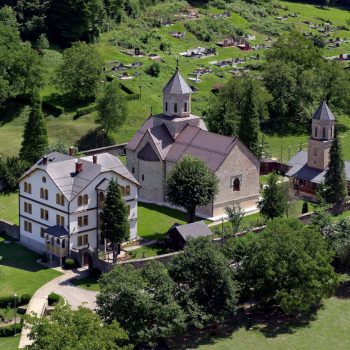
The Mostanica Monastery is a Serbian Orthodox monastery considered one of the most significant Orthodox monasteries in Bosnia and Herzegovina. Nestled in the valley of the river of the same name on the northern slopes of Kozara, 12 kilometers south of Kozarska Dubica, it belongs to the Diocese of Banja Luka. It is believed to have been built in the 16th century. Since then, it has been destroyed and rebuilt a staggering nine times.
The first written record of the Monastery of Moštanica dates back to 1579, found in the book “Otachnik” currently kept in Hilandar Monastery. This book states that it was written in the church of Saint Michael the Archangel at the Monastery called Moštanica, during the time of Abbot Gregory, a hieromonk.
Folklore has preserved several legends about the founding of the monastery. According to one, the monastery was built in 1113 at the site of the martyrdom of Saint Theodore of Tiron. This claim of such an early founding is based on an inscription on an old monastery key, which bears the number 1111. Another legend asserts that the monastery was endowed by the parents of Saint Sava.”
Donja Gradina memorial site
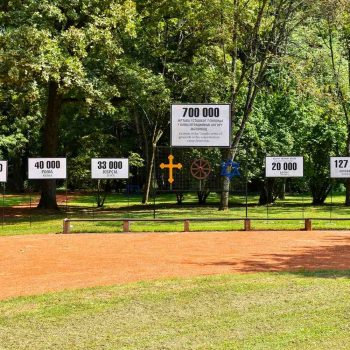
Donja Gradina was part of the notorious Ustasha concentration camp Jasenovac, where approximately 700,000 innocent victims were brutally murdered. The terrain of Donja Gradina, spanning about 808 hectares and secured by a system of interconnected bunkers, served as a convenient place for the Ustasha executioners to carry out their horrific tortures and killings during World War II. Prisoners from Jasenovac were transported across the Sava River by ferry to Donja Gradina, where they were immediately killed. A large number of victims did not even enter the Jasenovac camp but were taken directly to Donja Gradina and executed. It has been established that around 366,000 prisoners lost their lives here.
In 1975, Donja Gradina was declared a memorial site (by the Law on the Construction and Financing of the Donja Gradina Memorial Site, Official Gazette of the Socialist Republic of Bosnia and Herzegovina, No. 13/75), and its arrangement began. The Donja Gradina Memorial Site (the narrower zone) extends over 117 hectares. Nine burial grounds contain 105 large mass graves covering an area of 10,130 square meters. An additional 22 graves have been found, but their size has not yet been determined.
Kozara National Park
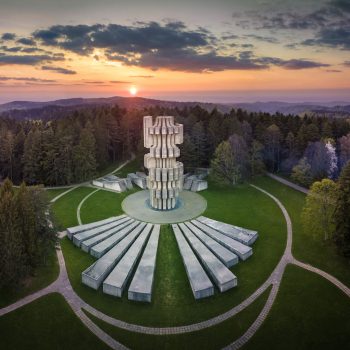 Known as the “Beauty of Krajina,” Kozara is renowned for its dense forests of deciduous and coniferous trees, meadows, crystal-clear streams, and rich biodiversity. This mountain is a true natural health resort, unique for its rapid regeneration of red blood cells. Here, you can breathe deeply and enjoy the stunning surroundings of Kozara’s forests while engaging in various activities. Hiking, cycling, sport climbing, and skiing make your stay on Kozara complete. Marked hiking trails offer an excellent opportunity to explore this mountain, admire its picturesque landscapes, and improve your physical and mental well-being. To preserve and protect its cultural, historical, and natural values, the central part of Kozara mountain, covering an area of 3,907.54 hectares, was declared a national park in 1967. The central part of the Kozara National Park is dominated by the Mrakovica plateau (806 m above sea level), which, due to its urban amenities, often hosts cultural events and attracts a large number of visitors. In every season, Kozara National Park offers something special: in spring, the dense forest complexes turn green and come alive; in summer, the fresh air and shade of tall conifers provide relief from the heat; autumn enchants with its colors, and in winter, the snow cover allows you to enjoy the magic of winter sports.
Known as the “Beauty of Krajina,” Kozara is renowned for its dense forests of deciduous and coniferous trees, meadows, crystal-clear streams, and rich biodiversity. This mountain is a true natural health resort, unique for its rapid regeneration of red blood cells. Here, you can breathe deeply and enjoy the stunning surroundings of Kozara’s forests while engaging in various activities. Hiking, cycling, sport climbing, and skiing make your stay on Kozara complete. Marked hiking trails offer an excellent opportunity to explore this mountain, admire its picturesque landscapes, and improve your physical and mental well-being. To preserve and protect its cultural, historical, and natural values, the central part of Kozara mountain, covering an area of 3,907.54 hectares, was declared a national park in 1967. The central part of the Kozara National Park is dominated by the Mrakovica plateau (806 m above sea level), which, due to its urban amenities, often hosts cultural events and attracts a large number of visitors. In every season, Kozara National Park offers something special: in spring, the dense forest complexes turn green and come alive; in summer, the fresh air and shade of tall conifers provide relief from the heat; autumn enchants with its colors, and in winter, the snow cover allows you to enjoy the magic of winter sports.


